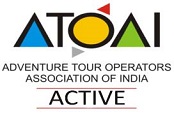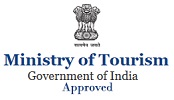Corporate managers often look at their teams as an entity in its own right that lives, excels, fails and exist as a single unit. But this is like describing a car by its color or model name, without taking a peek under its hood. You would know that the car moves, is from ‘a’ brand, can go from 0 to 100 in ‘x’ seconds and so on. But you wouldn’t know how its engine works, what kind of grip its wheels have and how it manoeuvres around tight corners. Same goes for your team – no matter what the target they are working towards, you need to look inside its shell and learn what’s going on inside. And that is where Team Building comes into play.
For any team to be effective, the individuals that make up the team should know ways to collaborate and contribute towards team outcomes. Building this cohesiveness of working together takes time – a considerable duration of the individuals working together. They need to get to know each other, figure out their strengths and weaknesses, build trust and learn coordination. The tool that HRs use to speed up this process is Team Building Programs.
The process of individuals learning to work together effectively is known as Team Development. Whenever companies recruit new employees, create a new project or shuffle departments, this process begins again – people learning to be with each other and work with each other. Understanding the process of Team Development is critical for any manager or team leader to guide their subordinates towards achieving collective effectiveness.Outbound team building programs provide individuals with the opportunity to fast forward this process and create situations where team bonding and cohesiveness can be created in controlled environments.
In this preliminary stage of team building, individuals get oriented with the new work environment and team mates. This is the phase where most employees look towards leadership and authority, owing to their uncertainty regarding the new set of people they are working with.
Corporate Outbound Team Building Programs begin with establishing this leadership right at the outset. Leaders of the unit are chosen and the individuals engage in mostly social interactions so as to get to know one another.
This is the second and most difficult phase to pass through. Individual personalities begin to emerge, leading to conflicts, competition and disagreements. Employees might even yearn for their old work environments where they were comfortable and familiar. Some members might rally around the stronger personalities in the group while others may differ over goals and operational processes and may even point fingers towards one another for failures of the team. Team performance actually decreases during this stage as the energy and focus of the individuals is more towards unproductive issues and conflicts.
Corporate Outbound Team Building Programs usually reach this stage through ice-breaking activities. Mentors make the individuals realise their personal contribution towards the task, its role in the performance of the team and the effects of playing the blame game. This stage helps bring out inherent conflicts within the unit that can then be worked upon for achieving cohesiveness.
This is the third stage where the failures of the second phase begin to dawn upon the individuals. Some degree of unity and consensus begins to emerge between the individuals. People begin to set aside their differences for achieving the greater good. The group begins trusting the leaders, following protocols and working with cooperation. However, this harmony is precarious at the very least, and any re-emerging conflicts can have the group sliding back into the discord of stage two.
Corporate Outbound Team Building Programs take this stage as a phase of trials. The outbound activities become more challenging and demand collective thinking and unity from the individuals. Each activity is now chosen to strengthen the precarious bond formed between the individuals, creating opportunities to put this team harmony to the test.
By the time the group reaches this fourth stage, consensus and cooperation have become well established factors within the unit. The individuals keep their sense of self on the backburner and really step on the gas pedal, moving faster and faster towards goal achievement. The group begins to play to each other’s strengths and supplements weaknesses. Problems still emerge but they are dealt with more constructively. Commitment towards completing the team’s mission takes center stage.
Corporate Outbound Team Building Programs now generate opportunities to keep the winning morale of the teams up. This sense of achievement is what will remain etched in the individuals minds later on – the idea that they all got together, despite their differences, and made a difference for the team. This very same feeling will stay with them in the workplace as well.
This is the stage when most of the goals of the team have been completed. Now is the time to look back and reflect on what the individuals went through, what they did and how they all came together for the collective benefit. This phase is important as it allows employees to form lasting bonds with each other AND realise their personal potential for putting the good of the team before their own.
Corporate Outbound Team Building Programs usually end this stage with a ceremonial acknowledgement of the work and success of the teams. The focus shifts from winning or losing towards reflection and self-assessment. This is the most crucial stage of the training program as it ensures that the experiences from the day are translated into concrete changes in the work-life of employees.
While every project or department can go through this process on its own, professionally designed team building programs can help make its outcome faster and more effective than its natural course. So if you have a new target coming up or have a fresh set of individuals coming together for the first time for a project, consider planning an outbound team building program for them. The results will be astounding!
Yog Chinmoy Dutt, Lead HR Trainer with Junoon, offers active learning programs through adventure and nature. His corporate outbound training programs are designed around the foundation of breaking out of the cubicle and PPT based training systems. These OBTs take route of experiential learning where the participants are exposed to unfamiliar, nature based environments along with targeted team building activities and challenges through which they discover their true performance potential and understand team dynamics.



